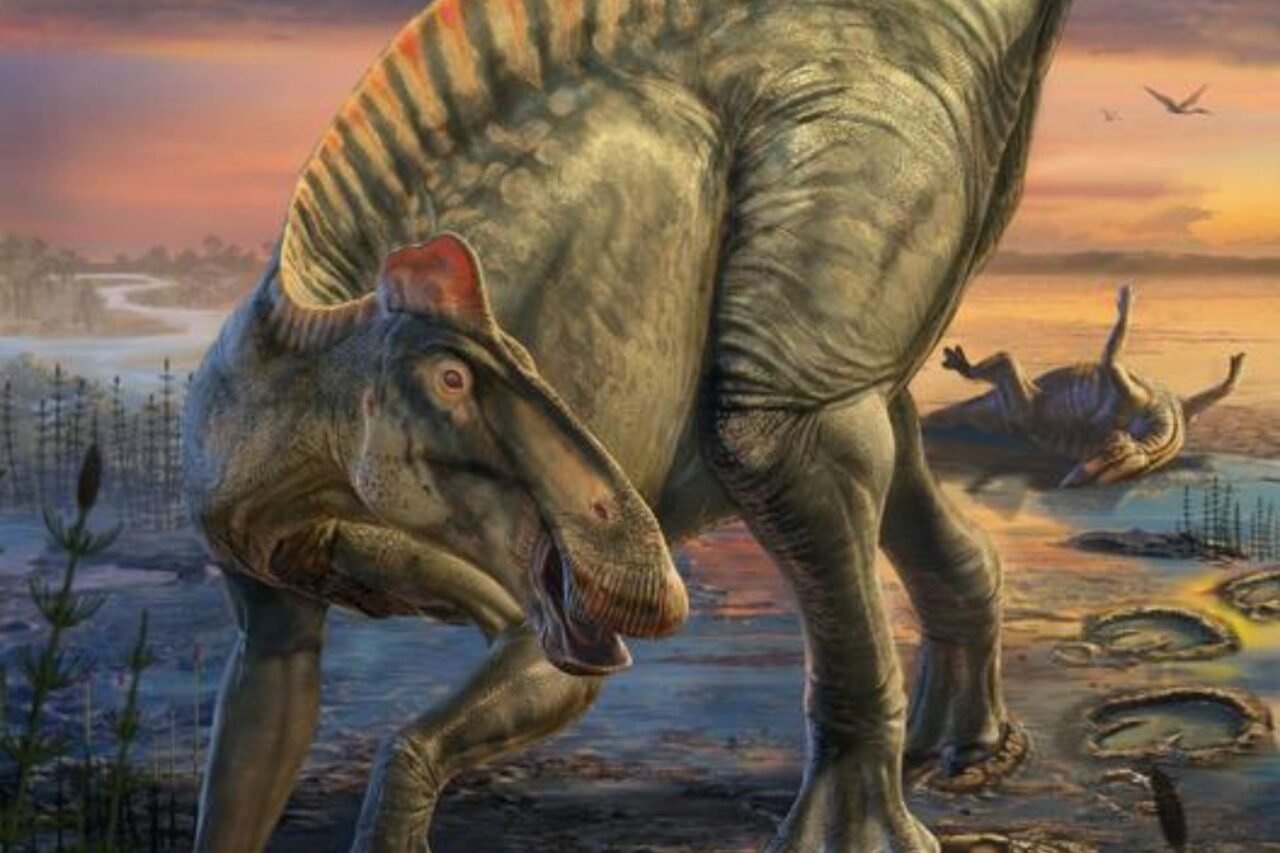Science
Scientists Reveal Stunning Details of Ancient Dinosaur Mummies

In a groundbreaking study, scientists have reconstructed the appearance of the **Edmontosaurus annectens**, a large duck-billed dinosaur, using exceptionally well-preserved specimens found in Wyoming’s “mummy zone.” Published in the journal **Science** on March 15, 2024, the research highlights the advanced preservation techniques that reveal details of these creatures as they roamed the Earth approximately **66 million years ago**.
The “mummy zone,” located within the **Lance Formation** in east-central Wyoming, has yielded numerous remarkable dinosaur fossils over the past century. In the early 2000s, researchers uncovered two specimens of **E. annectens**, a juvenile and an early adult, both of which retained significant portions of their skin and features. Unlike traditional mummies, the preservation of these dinosaurs occurred through a process known as clay templating.
Understanding Clay Templating
In contrast to human mummies, which are preserved through dehydration and embalming, the dinosaur specimens were enveloped in a thin layer of clay that formed during their burial. Co-author **Paul Sereno**, a professor of organismal biology and anatomy at the **University of Chicago**, explained, “This is a mask, a template, a clay layer so thin you could blow it away.” The unique preservation process began when a flash flood buried the dinosaurs shortly after their death, leading to a layer of bacteria coating their decaying bodies. This bacteria attracted clay particles from the surrounding sediment, creating a 3D cast of the dinosaurs’ true surface.
The study revealed that this clay layer, measuring only **0.01 inches (0.02 centimeters)** in thickness, allowed for the fossilization of the underlying skeleton over millions of years. By employing advanced imaging techniques and analyzing the excavation site, the research team was able to decode the details of how this remarkable preservation occurred.
Reconstructing a Lost Species
The findings have provided unprecedented insights into the physical characteristics of **E. annectens**. Researchers determined that these dinosaurs sported a fleshy crest along their neck and back, which transitioned into a row of tail spikes. The skin was predominantly covered in small, pebble-like scales. Notable discoveries included the wedge-shaped hooves present on the adult specimen’s hind feet.
“There are so many amazing ‘firsts’ preserved in these duck-billed mummies—the earliest hooves documented in a land vertebrate, the first confirmed hooved reptile, and the first hooved four-legged animal with different forelimb and hindlimb posture,” Sereno stated. The team’s findings have inspired digital artists to recreate the movements of the **E. annectens**, illustrating them walking along soft mud during the late **Cretaceous Period**.
As research continues in the mummy zone, the potential for new discoveries remains high. The meticulous examination of these fossils not only enhances our understanding of this ancient species but also sheds light on the unique environmental conditions that allowed for such exceptional preservation. The insights gained from the **Edmontosaurus annectens** mummies contribute significantly to the ongoing exploration of dinosaur biology and ecology, offering a richer narrative of life during a pivotal era in Earth’s history.
-

 Science4 weeks ago
Science4 weeks agoALMA Discovers Companion Orbiting Giant Red Star π 1 Gruis
-

 Top Stories2 months ago
Top Stories2 months agoNew ‘Star Trek: Voyager’ Game Demo Released, Players Test Limits
-

 Politics2 months ago
Politics2 months agoSEVENTEEN’s Mingyu Faces Backlash Over Alcohol Incident at Concert
-

 World2 months ago
World2 months agoGlobal Air Forces Ranked by Annual Defense Budgets in 2025
-

 World2 months ago
World2 months agoElectrification Challenges Demand Advanced Multiphysics Modeling
-

 World2 months ago
World2 months agoMass Production of F-35 Fighter Jet Drives Down Costs
-

 Business2 months ago
Business2 months agoGold Investment Surge: Top Mutual Funds and ETF Alternatives
-

 Science2 months ago
Science2 months agoTime Crystals Revolutionize Quantum Computing Potential
-

 Top Stories2 months ago
Top Stories2 months agoDirecTV to Launch AI-Driven Ads with User Likenesses in 2026
-

 Entertainment2 months ago
Entertainment2 months agoFreeport Art Gallery Transforms Waste into Creative Masterpieces
-

 Health2 months ago
Health2 months agoGavin Newsom Critiques Trump’s Health and National Guard Plans
-

 Business2 months ago
Business2 months agoUS Government Denies Coal Lease Bid, Impacting Industry Revival Efforts









